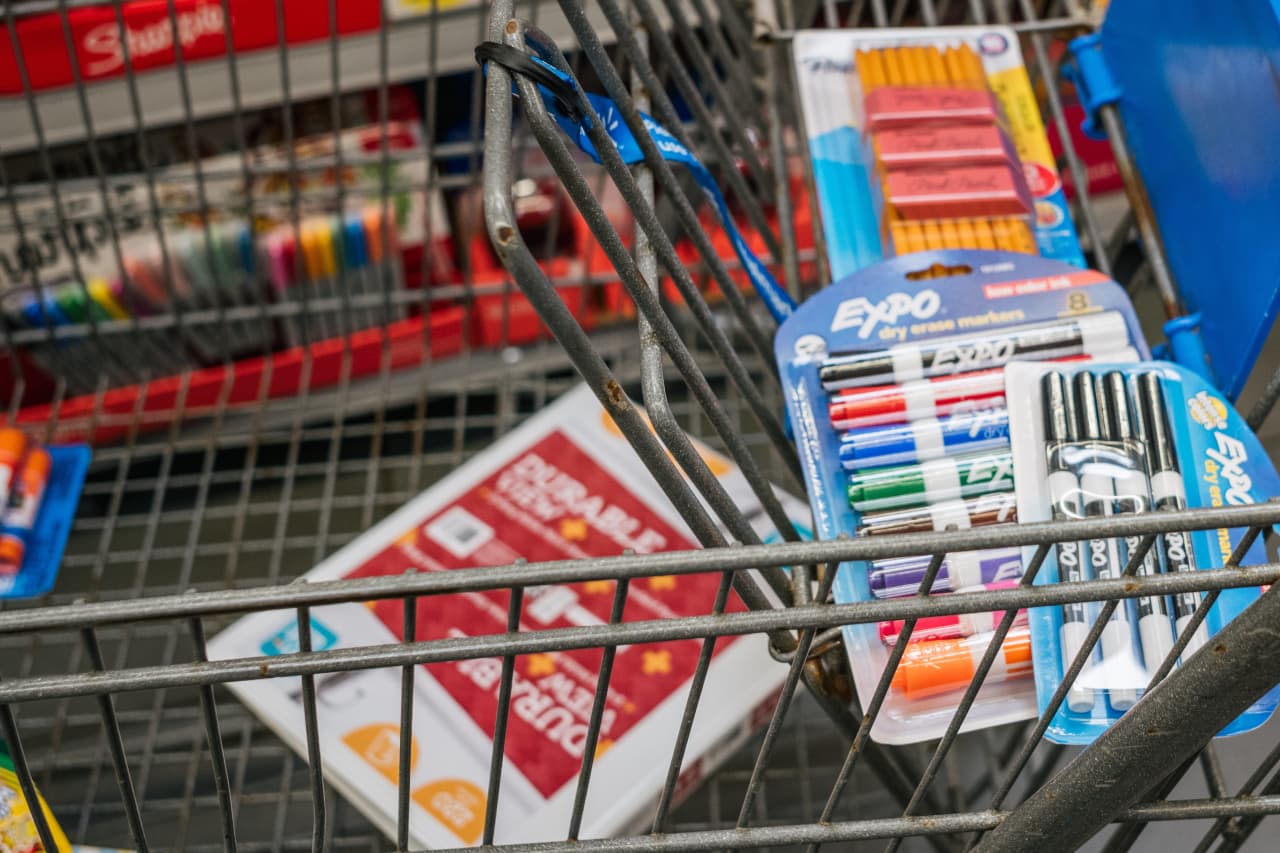Inflation and Tariffs Hit Back-to-School Spending, Testing Stock Market Resilience
By Jennifer Thompson
August 23, 2025
As families across the United States gear up for the back-to-school season, rising inflation and new tariffs are casting a shadow over their budgets, potentially impacting retail performance and testing stock market stability. With the National Retail Federation (NRF) estimating total back-to-school spending to reach $39.4 billion in 2025, up slightly from $38.8 billion in 2024, consumers are navigating a challenging economic landscape marked by higher prices and cautious spending habits.
Economic Pressures Reshape Consumer Behavior
The back-to-school season, the second-largest retail event after the holidays, is a critical indicator of consumer sentiment and economic health. This year, however, inflation and tariffs on imported goods—such as backpacks, electronics, and apparel—are driving up costs, forcing families to rethink their purchasing strategies. According to a recent NRF survey, 67% of shoppers had already begun their back-to-school purchases by early June, a significant increase from 55% the previous year, with 51% citing concerns over tariff-related price hikes as the primary motivator for shopping early.
David Warrick, EVP at Overhaul, a supply chain risk management company, notes that school staples like backpacks, lunchboxes, and tech accessories are particularly vulnerable to tariff-driven price increases, with an expected average rise of 12–15% across back-to-school essentials. “Retailers have front-loaded inventory to delay price spikes, but this buffer may run out by late summer or early fall,” Warrick explains.
The NRF reports that families with students in elementary through high school plan to spend an average of $858.07 on school-related items, down slightly from $874.68 in 2024. Similarly, college shoppers are expected to spend $1,325.85, a decrease from $1,364.75 last year. Despite the slight dip in per-household spending, total spending is projected to rise due to broader participation, reflecting the determination of parents to prioritize education-related purchases despite economic pressures.
Retail Strategies and Consumer Adaptations
Retailers are responding to these challenges by emphasizing affordability and early promotions. Major players like Walmart, Target, and Amazon are rolling out back-to-school sales to capture cost-conscious shoppers. Walmart recently announced lower prices on 14 popular school supplies compared to last year, while Target is maintaining 2024 prices on key items like $5 backpacks and offering a 20% discount for verified teachers and college students.
Consumers, meanwhile, are adopting savvy shopping habits honed during the post-pandemic period. Many are focusing on essentials, utilizing technology to compare prices, and taking advantage of state-specific tax-free weekends. Posts on X highlight this trend, with users noting a shift toward value-conscious spending and early purchases to mitigate tariff-driven cost increases. Some families are also turning to discount retailers like Dollar General and Walmart or opting for refurbished electronics and generic brands to stretch their budgets.
However, these strategies come at a cost. Inflation-adjusted income growth has slowed, and the bottom 80% of households have seen a significant decline in savings since 2022, according to the Federal Reserve Bank of San Francisco. This financial strain is pushing families to make trade-offs, such as cutting back on discretionary purchases like dining out to prioritize school supplies.
Stock Market Implications
The confluence of inflation, tariffs, and cautious consumer spending is raising concerns about the broader economic outlook, with potential ripple effects for the stock market. The S&P 500, currently near an all-time high, may face volatility as investors assess the impact of tariff-driven price increases and a softening economy. Jennifer Timmerman, a senior investment strategy analyst at Wells Fargo Investment Institute, warns that the market is “vulnerable to event risk” this fall, particularly if consumer spending weakens further.
Retail stocks are under particular scrutiny. Discount retailers like Walmart (WMT) and Dollar General (DG) are poised to benefit from the shift toward value-driven purchases, with analysts noting their resilience due to private-label strategies and e-commerce integration. Conversely, premium brands like Nike (NKE) and VF Corporation (VFC) may face challenges as consumers prioritize affordability over brand prestige. Posts on X also point to potential market strain, with traders keeping a close eye on retail giants and tech stocks like Apple (AAPL) and Tesla (TSLA) as indicators of broader market trends.
The University of Michigan’s preliminary August consumer sentiment reading signals deteriorating confidence, particularly among middle-income earners, who anticipate higher inflation and potential job losses. This pessimism, coupled with tariff-related price pressures, could slow economic growth into early 2026, according to market analysts.
Looking Ahead
As the back-to-school season unfolds, retailers and investors are bracing for a critical test of consumer resilience. While retailers have mitigated some tariff impacts by front-loading inventories, the full effect of price increases may hit later in the season, potentially dampening sales. For now, the focus remains on value, with both retailers and consumers adapting to a new economic reality.
The stock market’s response will hinge on how well retailers navigate these challenges and whether consumer spending holds up under pressure. As one X user noted, “Parents feel the pinch as back-to-school shopping gets 9% costlier amid Trump’s trade war,” underscoring the real-world impact of these economic forces. With holiday shopping on the horizon, the trends observed now may offer a glimpse into the broader retail landscape for the rest of 2025.
Jennifer Thompson is a business reporter covering retail and economic trends.
